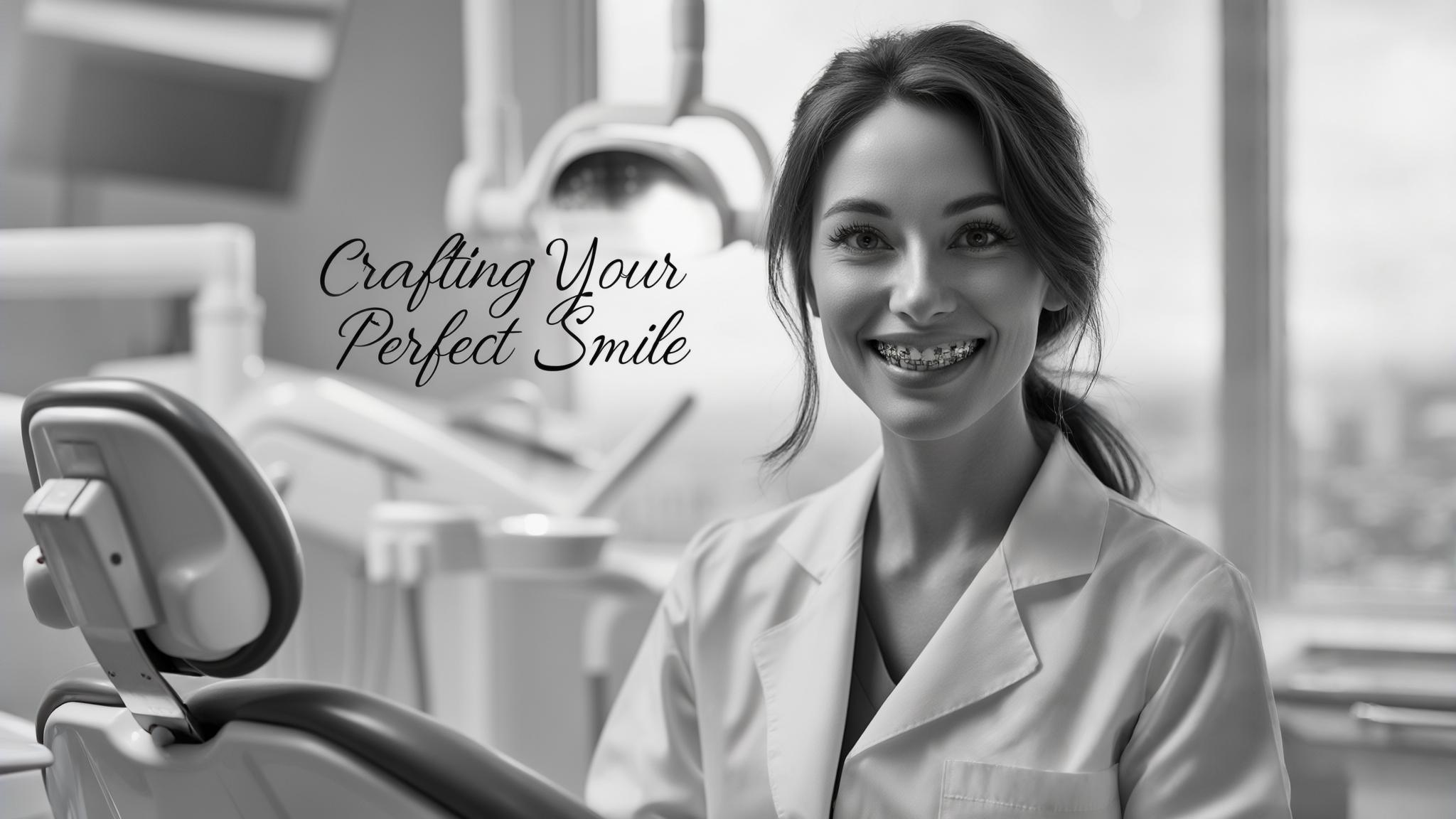Orthodontics: Crafting Your Perfect Smile
Understanding Orthodontics
Orthodontics is a specialized branch of dentistry focused on diagnosing, preventing, and correcting misaligned teeth and jaws. It’s not just about straightening teeth; it’s about creating a healthy, functional bite that can enhance your overall dental health. Imagine your teeth as pieces of a puzzle that need to fit perfectly together—orthodontics helps achieve that harmony.
Achieving a healthy smile is more than just aesthetics; it’s about maintaining oral health. Misaligned teeth can lead to issues like tooth decay, gum disease, and even jaw pain. Orthodontics plays a crucial role in preventing these problems by ensuring your teeth and jaws are in the right position.
Introduction to Smile Design
Smile design is the artistic side of dentistry. It involves creating a smile that is both beautiful and functional, tailored to the individual’s unique facial features and personality. Orthodontics is a key player in this process, as it lays the foundation for a smile that is not only visually appealing but also healthy.
Understanding Smile Goals
What are Smile Goals?
Smile goals are personalized objectives that guide the treatment process to achieve the desired outcome. These goals are influenced by various factors, including your facial structure, teeth alignment, and personal preferences. Think of them as a roadmap to your ideal smile.
Setting personalized smile goals is essential because it ensures that the treatment plan aligns with your expectations and needs. A well-aligned smile can boost your self-esteem and confidence, making you feel more comfortable in social situations.
Importance of Setting Smile Goals
Beyond aesthetics, setting smile goals can significantly improve oral health and function. Proper teeth alignment makes it easier to clean your teeth, reducing the risk of cavities and gum disease. Additionally, a balanced bite can enhance chewing efficiency and speech clarity.
The Role of Orthodontics in Smile Design
Overview of Orthodontic Treatments
Orthodontic treatments come in various forms, each tailored to address specific alignment issues. The most common appliances include traditional braces, which use brackets and wires, and clear aligners like Invisalign, which are nearly invisible and removable.
The duration of orthodontic treatment varies depending on the complexity of the case, typically ranging from several months to a few years. The process involves regular adjustments and monitoring to ensure progress towards the desired outcome.
How Orthodontics Contributes to Smile Design
Orthodontics plays a pivotal role in aligning teeth and positioning the jaw correctly. This alignment not only corrects bite issues like overbite, underbite, and crossbite but also enhances the overall aesthetics of the smile by ensuring teeth are properly shaped and proportioned.
The Process of Smile Design with Orthodontics
Initial Consultation
The journey to a perfect smile begins with an initial consultation. During this visit, your orthodontist will conduct a comprehensive dental examination and discuss your smile goals and expectations. This step is crucial for understanding your needs and setting realistic objectives.
Diagnostic Tools
Advanced diagnostic tools such as X-rays and digital imaging technologies play a vital role in assessing your dental structure. Digital smile design software can simulate potential outcomes, allowing you to visualize the end result before treatment begins.
Treatment Planning
Based on the collected data, a customized orthodontic plan is crafted to meet your specific needs. This plan outlines the timeline and milestones, providing a clear path to achieving your smile goals.
Common Orthodontic Treatments for Smile Design
Traditional Braces
Traditional braces consist of brackets, wires, and bands that work together to move teeth into their desired positions. They are highly effective for complex alignment issues but may require more maintenance and visibility.
Clear Aligners
Clear aligners, such as Invisalign, offer a discreet alternative to traditional braces. They are custom-made, removable, and comfortable, making them an attractive option for those concerned about aesthetics during treatment.
Other Orthodontic Appliances
Lingual braces, placed behind the teeth, offer an aesthetic appeal similar to clear aligners. Retainers, used post-treatment, help maintain the results by keeping teeth in their new positions.
The Impact of Orthodontics on Overall Oral Health
Benefits Beyond Aesthetics
Orthodontics offers benefits that extend beyond a beautiful smile. Properly aligned teeth are easier to clean, reducing the risk of cavities and gum disease. Additionally, a well-aligned bite improves chewing efficiency and speech clarity.
Long-term Oral Health Maintenance
After achieving your smile goals, maintaining oral health is crucial. Regular follow-up care and the use of retainers are essential to preserve the results. Consistent dental check-ups ensure that your teeth remain healthy and aligned.
Conclusion
Orthodontics is more than just a means to a beautiful smile; it’s a pathway to improved oral health and self-confidence. Consulting an orthodontist is the first step towards achieving your smile goals. Investing in your smile is investing in your overall well-being, and with professional guidance, you can enjoy the benefits of a healthy, beautiful smile for years to come.
References
- American Association of Orthodontists: aaoinfo.org
- Invisalign: invisalign.com
- Journal of Orthodontics and Dentofacial Orthopedics
For more information, consider visiting these resources for further exploration into the world of orthodontics and smile design.

